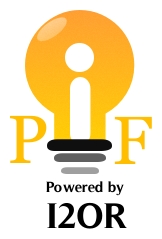Chelate Chrome Use for the Vermiculture |
| ( Volume 5 Issue 1,January 2019 ) OPEN ACCESS |
| Author(s): |
I. Beshkenadze, M. Gogaladze, N. Klarjeishvili, M. Chikaidze, L. Gogua, O. Lomtadze |
| Abstract: |
|
Effect of methionine-containing chelate chrome, having Cr(Mt)3·4H2O formula on the protein mass change of rainworms and on the degree of cocoon reproduction is studied, and the impact of various external stress-factors, namely submerging, substrate quality and toxic doses of chelate chrome on the rainworms is established. For these purposes the experiment was carried out according to the same scheme for four options. Four (one control and three test) groups: with maximum (Max.), normal (Norm.) and minimum (Min.) doses of chelate chrome (in gr.) were composed for all options, each with three repetitions. 5 worms with roughly equal masses were selected for each repetition. Weighing and cocoons’ counting were conducted in three stages, on the 21st, 31st and 41st days since the start of the experiment. In the first option of the experiment throughout the course of the test an increase in rainworms’ mass takes place in all groups. Apart from that, in comparison to all test groups the degree of mass increase is high and reaches the maximum in the I test group – 106,19%. As for the increase in the degree of cocoons’ reproduction, it is higher in all test groups compared to the control one and reaches the maximum in the III test group – 142,59%. On the basis of obtained results the optimum and effective dosage of chelate chrome is established and is 0,0028gr. per 300gr. of. When studying external stress-factors – submerging (second option) and low-quality substrate (third option), on the basis of carried-out studies it was established that chelate chrome increases the stability of rainworms against different external stress-factors that is expressed in the fact that in all three repetitions of the control group all worms died during submerging and when using a low-quality substrate, while in test groups part of them died. On the basis of experiments conducted regarding the toxicity of chelate chrome towards rainworms (fourth option) we can conclude that they are quite sensitive towards high doses of microelements which is expressed in the fact that worms’ death took place in all test groups, while five worms in each repetition of the control group were completely intact. Thus, the rainworms can be successfully used as biotests of microelements’ toxicity. This circumstance is very important due to the cheapness and simplicity of the method. |
 DOI :
DOI :
|
| Paper Statistics: |
| Cite this Article: |
| Click here to get all Styles of Citation using DOI of the article. |
 Click Here for
Click Here for Track Your Paper

 Call for Paper
Call for Paper
